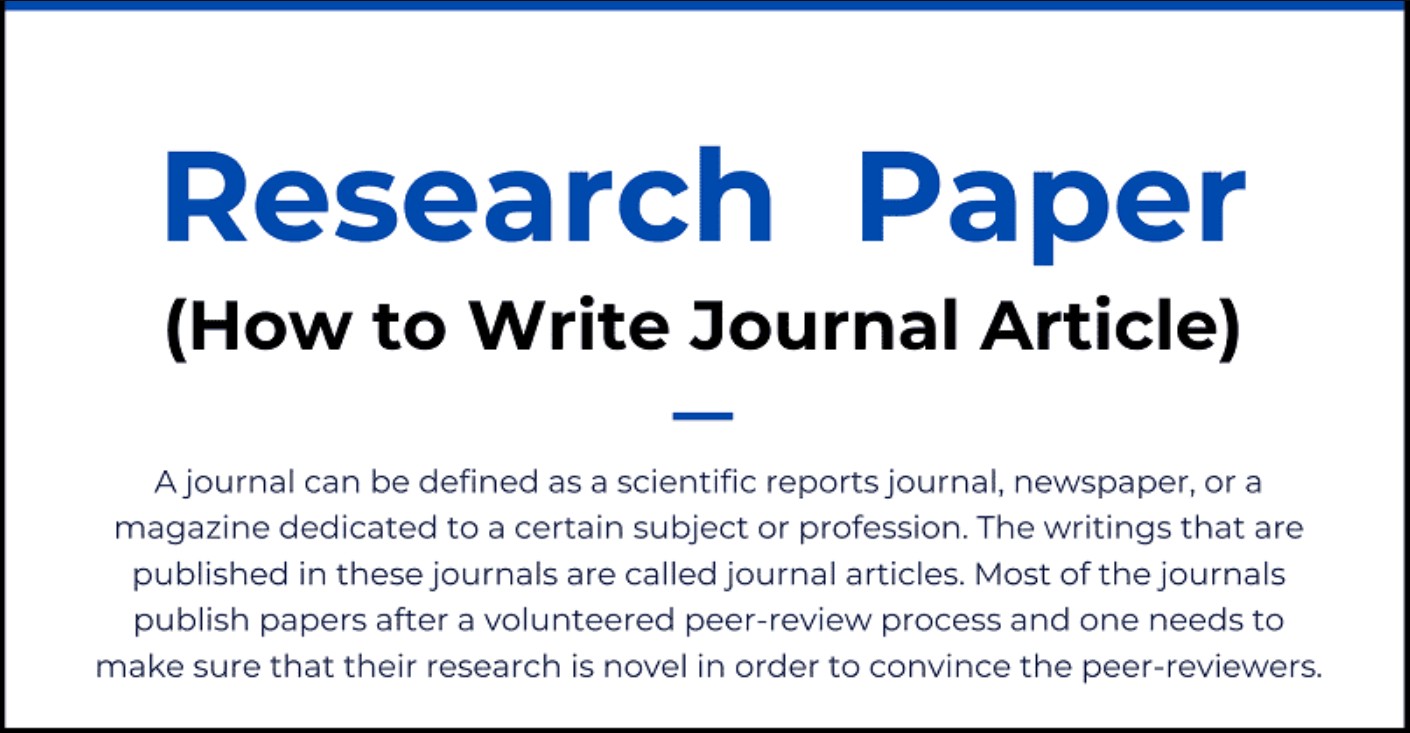Impact site verification: -82296303
Writing a good article for a research review requires a structured approach, clarity and strong argument. Here is a step by step guide to help you:

1. Choose a clear and relevant subject
- Select an original, significant search problem and align with current discussions in your field.
- Make sure your research question is specific, well defined and contributes to existing knowledge.
2. Make an in -depth literature review
- Identify the gaps in the existing literature.
- Summarize key theories, methodologies and results related to your subject.
- Cite recent and relevant studies to justify the need for your research.
3. Structure your paper correctly
A well -structured research article generally follows this format
Title
- Be concise but descriptive, highlighting the main idea of your research.
- Avoid unnecessary jargon, but make sure it captures the essence of your work.
Abstract
- Write a brief summary (150–250 words) covering the research problem, methodology, key results and implications.
- Make sure it is clear and engaging, because many readers decide to read an article based on the summary.
Keywords
- Choose 4 to 6 relevant keywords that make your item easy to find in databases.
Introduction
- Provide general information and define the context of your study.
- Define the research problem, its meaning and its research objectives.
- Clearly state the research question (s) and the hypothesis (if applicable).
Methodology
- Explain how research was conducted, including study design, data collection methods and analytical techniques.
- Justify why you have chosen specific methods and make sure of reproducibility.
Results
- Present your results clearly using tables, graphics and numbers if necessary.
- Avoid interpretation – Simply indicate the raw data and the results of the analysis.
Discussion
- Interpret the results in the context of existing literature.
- Explain how your results contribute to knowledge and answer your research questions.
- Discuss any limitation and suggest areas for future research.
Conclusion
- Summarize the main conclusions and their implications.
- Avoid repeating the information already stated in the discussion.
- Underline how your research advances the field.
References
- Use an appropriate quote style (APA, MLA, Chicago or specific format for the Journal).
- Make sure the precision in reference to all sources used in your study.
4. Maintain clarity and conciseness
- Write in a clear, logical and concise way.
- Avoid jargon and too complex sentences unless necessary.
- Use an active voice whenever possible.
5. Follow the newspaper directives
- Each newspaper has specific formatting, quotation and submission requirements – follow them strictly.
- Check the limits of words, font size, section requirements and reference styles.
6. Modify and reread
- Revise several times for more clarity, consistency and grammar.
- Look for the comments for colleagues or mentors.
- Use tools such as Grammarly, Hemingway Editor or publishing services recommended by Journal.
7. Send it the reviews of the examiners carefully
- If your article is evaluated by peers, be ready to make revisions based on the reviews of the examiners.
- Contact each comment professionally and provide clear justifications for changes.


